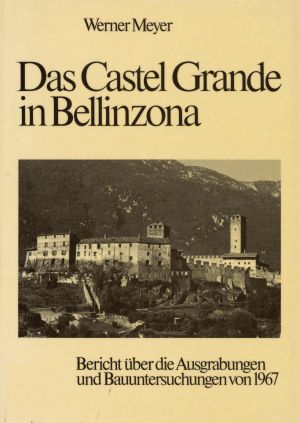Righetti, Argante
Das Castel Grande in Bellinzona: Bericht über die Ausgrabungen und Banuntersuchungen von 1967
The fortifications of Bellinzona are some of the most outstanding medieval defences in Switzerland. Throughout history, various forces have fought to gain ownership of the site. The marching sound of Roman legionaries was soon replaced by the cacophony of Germanic and Rhaetian hordes, before the various rulers of Italy took turns in fighting off foreign invaders. It was not until around 1500 when Bellinzona came into the ownership of the Old Swiss Confederacy that the situation became less volatile, and the fortifications gradually lost their military use.
This report does not claim to offer a complete history of the Castel Grande site, as the excavations and architectural study were limited to the south wing of the castle due to construction activities. The archaeological investigations yielded evidence of several phases of construction dating from the 4th to 11th centuries, while the examination of the walls identified elements dating from the first half of the 13th century up to the end of the 15th century. The small finds suggest that the hilltop was settled in prehistoric periods and attest to human presence from the Augustan period to the present. The high medieval finds clearly show influences from the northern foothills of the Alps (stove tiles) and from Italy (majolica). From the 13th century onwards, there was a significantly greater Lombard-Italian influence, which reached its highpoint in the 15th century, with regard to both the artefacts and the architectural design of the fortifications.







